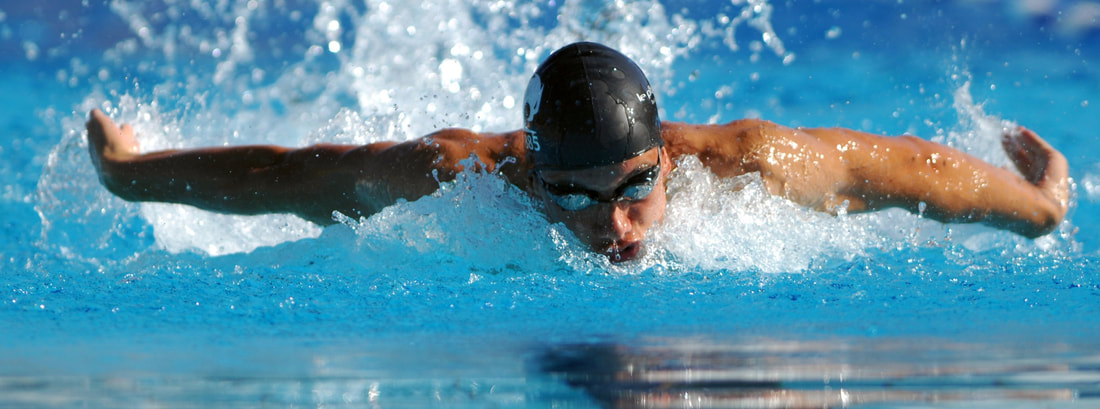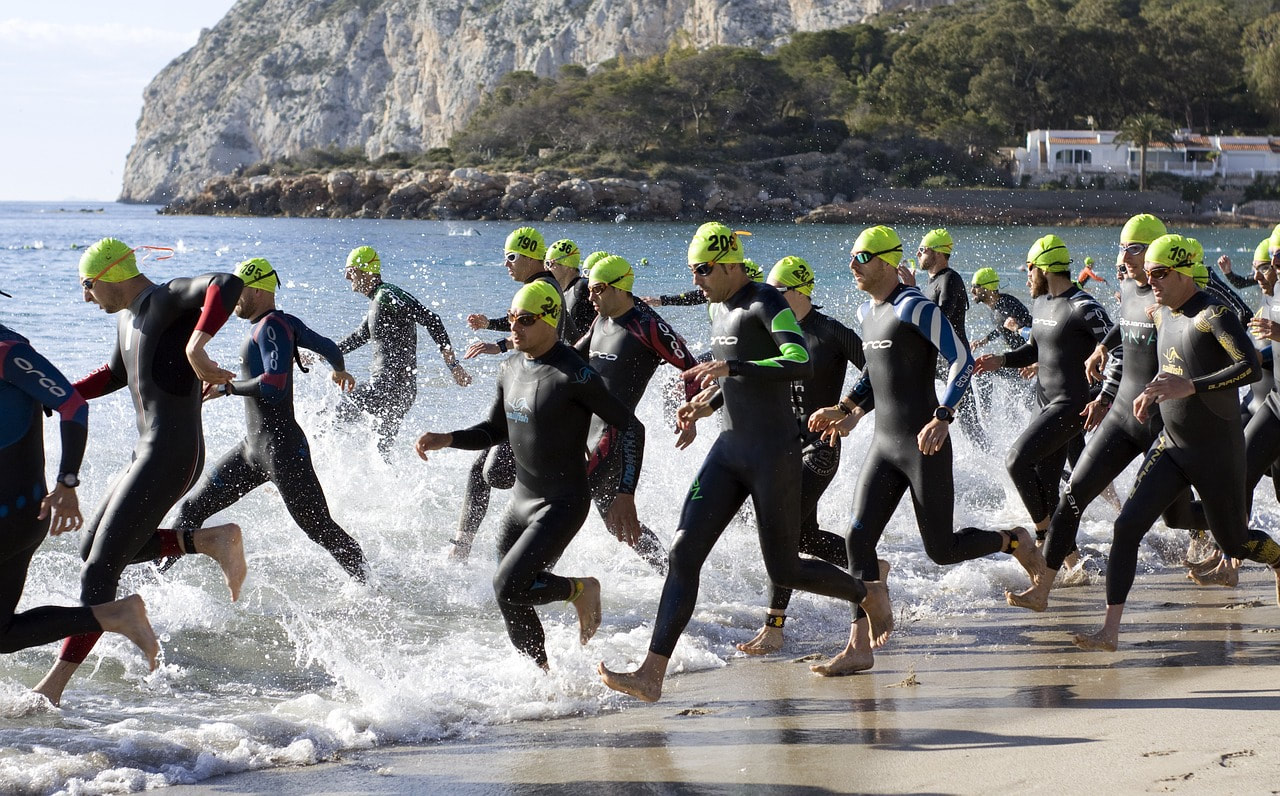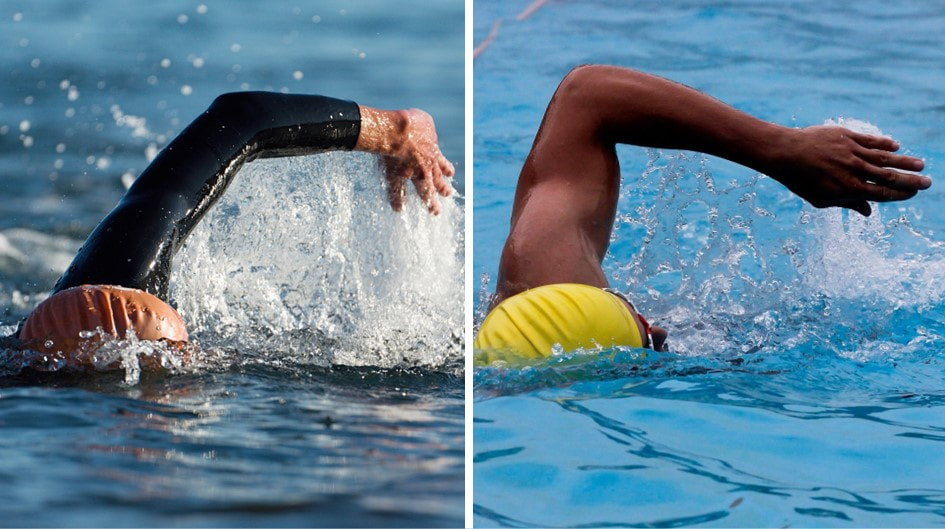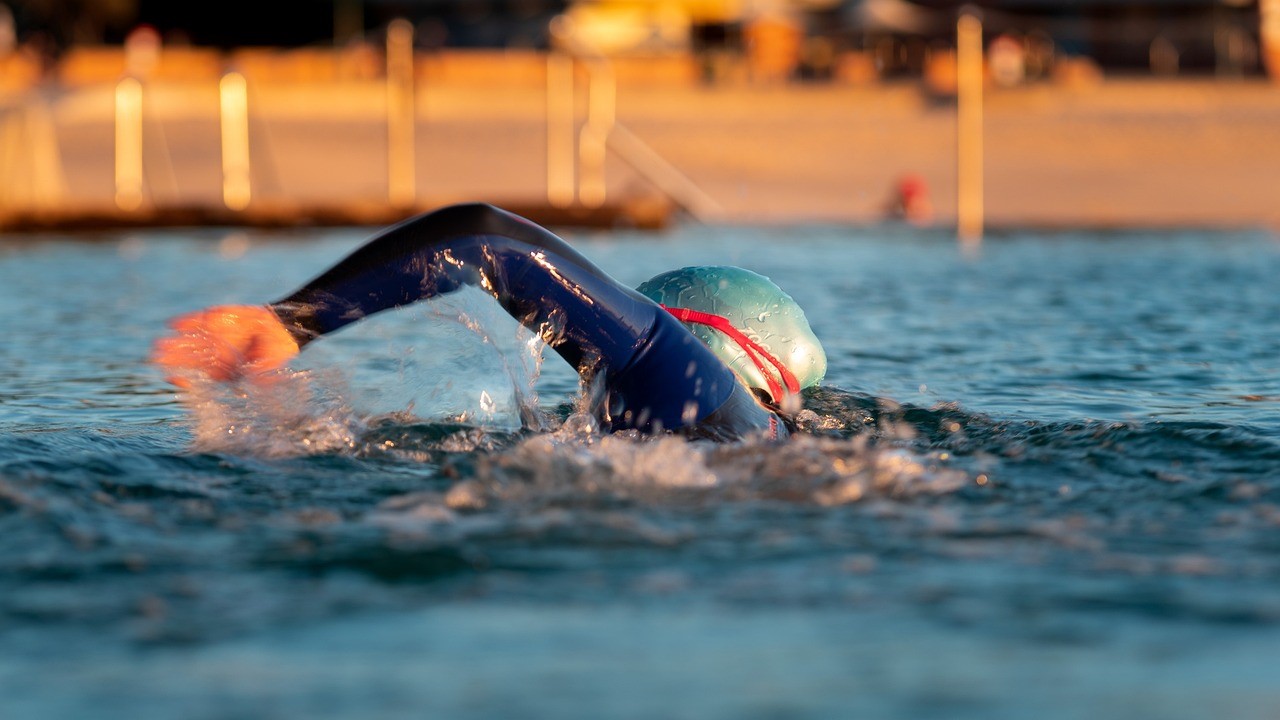|
As the world eagerly anticipates the Paris Olympics 2024, athletes and spectators alike are curious about the advancements and innovations that will shape all competitions in all sports. Amongst many sports, swimming stands out as a sport where technique and innovation can significantly impact performance. With each Olympic Games, we witness the evolution of swimming techniques, pushing the boundaries of human capability in the pool and open water. The Paris Olympics 2024 present an exciting opportunity for swimmers to showcase not only their physical prowess but also the latest advancements in training methodologies and technical skills. Let's delve into some of the innovative swimming techniques that may make waves at the upcoming games: 1. Hydrodynamic Streamlining: Efficient movement through water is essential for competitive swimmers. Hydrodynamic streamlining focuses on reducing drag and resistance by optimizing body position and motion. Advanced techniques such as the "fish-like" undulating body movements and minimizing surface area contact can enhance speed and efficiency in the water. 2. Underwater Dolphin Kicking: Underwater dolphin kicking has become increasingly prevalent in competitive swimming, especially in events like the butterfly and freestyle. Swimmers utilize powerful dolphin kicks off the walls and during starts to maintain momentum and conserve energy. Innovations in underwater propulsion techniques and equipment, such as monofins, allow swimmers to achieve remarkable speeds beneath the surface. 3. High-Intensity Interval Training (HIIT): Training methodologies play a crucial role in preparing swimmers for elite competition. High-intensity interval training (HIIT) has gained popularity for its ability to improve cardiovascular fitness, muscular strength, and endurance in a time-efficient manner. By alternating between bursts of intense activity and short recovery periods, swimmers can enhance their performance and adaptability to race conditions. 4. Biomechanical Analysis Advancements in sports science have enabled coaches and athletes to utilize biomechanical analysis tools to fine-tune swimming techniques. Motion capture systems, underwater cameras, and pressure sensors provide valuable data on stroke mechanics, body alignment, and propulsion efficiency. Real-time feedback allows swimmers to make immediate adjustments and optimize their performance in training and competition. 5. Mental Conditioning and Visualization: The mental aspect of swimming is often overlooked but can profoundly impact an athlete's performance. Mental conditioning techniques, including visualization, goal setting, and stress management, help swimmers cultivate focus, confidence, and resilience. By mentally rehearsing race scenarios and overcoming challenges in their minds, athletes can enhance their performance under pressure and achieve peak results when it matters most. 6. Customized Training and Recovery Protocols: Recognizing that every swimmer is unique, personalized training and recovery protocols are essential for maximizing performance and preventing injury. From tailored workout plans and nutritional strategies to recovery modalities such as cryotherapy and massage therapy, athletes benefit from individualized approaches that address their specific needs and goals. 7. Environmental Factors and Altitude Training: Environmental factors, including altitude and temperature, can influence an athlete's physiological adaptation and performance. Altitude training, which involves exposing athletes to reduced oxygen levels at high altitudes, stimulates the production of red blood cells and improves aerobic capacity. Additionally, training in varying water temperatures helps swimmers and triathletes acclimate to different race conditions and optimize their performance accordingly. As the Paris Olympics 2024 draw near, swimmers and coaches are embracing these innovative techniques to gain a competitive edge on the world stage. Through a combination of cutting-edge technology, scientific research, and strategic training methodologies, athletes are pushing the boundaries of what is possible in the water. Whether it's shaving milliseconds off lap times or breaking longstanding records, the pursuit of excellence in swimming continues to inspire and captivate audiences worldwide. Exploring Cutting-Edge Swimming Techniques for the Paris Olympics 2024 The Paris Olympics 2024 loom on the horizon, promising a spectacle of athleticism and human achievement. Among the many sports that will captivate audiences around the globe, swimming stands out as a showcase of speed, endurance, and technical mastery. As the world gears up for this prestigious event, athletes and coaches are exploring new frontiers in swimming techniques, seeking every advantage to propel themselves to victory. In this comprehensive exploration, we delve into the latest innovations and advancements in swimming techniques that may shape the competitions at the Paris Olympics 2024. From hydrodynamic streamlining to advanced biomechanical analysis, each aspect plays a crucial role in enhancing performance and pushing the boundaries of human potential in the water. Hydrodynamic Streamlining Efficiency is the cornerstone of competitive swimming, and mastering hydrodynamic streamlining is key to slicing through the water with minimal resistance. At the forefront of this technique is the pursuit of the perfect body position and motion to reduce drag and maximize propulsion. Swimmers are constantly refining their techniques to achieve the most hydrodynamic form possible. From the alignment of the head and spine to the position of the limbs during each stroke, every detail matters in optimizing streamlining. Coaches and sports scientists employ underwater cameras and motion capture systems to analyze swimmers' movements, identifying areas for improvement and fine-tuning their technique for maximum efficiency. One innovative approach to hydrodynamic streamlining involves mimicking the fluid dynamics of marine animals. By studying the biomechanics of fish and dolphins, swimmers can adapt their movements to harness the principles of nature's efficiency. Techniques such as undulating body motions and minimizing surface area contact with the water allow athletes to achieve greater speed and agility in the pool. Underwater Dolphin Kicking: Harnessing Power Beneath the Surface Underwater dolphin kicking has revolutionized the sport of swimming, particularly in events like the butterfly and freestyle. This powerful technique involves propelling oneself through the water with rapid, undulating kicks while submerged. At the heart of underwater dolphin kicking lies the exploitation of hydrodynamics to generate propulsion with minimal resistance. Swimmers execute dolphin kicks off the walls and during starts, leveraging the natural buoyancy of the water to maintain momentum and conserve energy. With the advent of advanced monofins and underwater propulsion devices, athletes can achieve remarkable speeds beneath the surface, gaining a competitive edge in races. Training methodologies for underwater dolphin kicking have evolved to focus on developing explosive power and endurance in the legs. High-intensity interval training (HIIT) sessions specifically target the muscles involved in dolphin kicking, enhancing strength, flexibility, and coordination. Additionally, breath control techniques and streamlined body positioning allow swimmers to maximize the distance covered with each underwater kick, optimizing their performance in races. Biomechanical Analysis in Swimming In the pursuit of swimming excellence, biomechanical analysis plays a pivotal role in optimizing technique and performance. Cutting-edge technologies such as motion capture systems, underwater cameras, and pressure sensors provide invaluable data on swimmers' stroke mechanics, body alignment, and propulsion efficiency. Coaches and sports scientists utilize biomechanical analysis tools to identify areas of improvement and tailor training programs to individual athletes' needs. By dissecting each aspect of a swimmer's technique, from the entry and catch phase to the propulsion and recovery phase of each stroke, coaches can offer precise feedback and corrective cues to enhance performance. Real-time feedback systems further revolutionize training methodologies, allowing swimmers to make immediate adjustments and refine their technique on the spot. By visualizing their movements and receiving instant feedback on key performance metrics, athletes can accelerate their progress and fine-tune their technique for peak performance at the Paris Olympics 2024. High-Intensity Interval Training (HIIT): Maximizing Fitness and Endurance Swimming is a demanding sport that requires athletes to possess exceptional levels of cardiovascular fitness, muscular strength, and endurance. High-intensity interval training (HIIT) has emerged as a highly effective training methodology for swimmers, offering a time-efficient way to enhance athletic performance and conditioning. HIIT sessions involve alternating between short bursts of high-intensity exercise and brief recovery periods, challenging the body to adapt to the demands of intense competition. Swimmers engage in a variety of HIIT exercises, including sprint intervals, plyometric drills, and resistance training, to improve power output, speed, and endurance in the water. One of the key benefits of HIIT for swimmers is its ability to simulate race conditions and replicate the physiological demands of competition. By pushing their bodies to the limit during training sessions, athletes develop the mental toughness and resilience needed to excel in high-pressure situations. Additionally, HIIT workouts promote metabolic adaptations that enhance fat burning, muscle endurance, and overall athletic performance. Mental Conditioning and Visualization In the pursuit of Olympic glory, mental conditioning is just as crucial as physical preparation for swimmers. The ability to maintain focus, confidence, and composure under pressure can make the difference between victory and defeat in the pool. Mental conditioning techniques, including visualization, goal setting, and stress management, are integral components of swimmers' training regimens. Visualization exercises allow athletes to mentally rehearse race scenarios, envisioning themselves executing flawless strokes and achieving their desired outcomes. By visualizing success and overcoming challenges in their minds, swimmers build the confidence and self-belief needed to perform at their best when it matters most. Goal setting plays a pivotal role in guiding swimmers' training efforts and keeping them motivated throughout their Olympic journey. By setting specific, measurable, and achievable goals, athletes create a roadmap for success and maintain a sense of purpose and direction in their training. Whether aiming to break personal records, qualify for finals, or stand atop the podium, clear goals provide swimmers with the motivation and drive to push themselves to new heights of excellence. Stress management techniques, such as deep breathing exercises and mindfulness meditation, help swimmers stay calm and centered amid the pressures of competition. By learning to regulate their emotions and maintain a positive mindset, athletes can overcome setbacks and perform at their peak when it matters most. Customized Training and Recovery Protocols: Tailoring the Approach Recognizing that every swimmer is unique, personalized training and recovery protocols are essential for optimizing performance and preventing injury. Coaches work closely with athletes to design individualized training programs that address their specific needs, goals, and biomechanical characteristics. Training protocols may include a combination of swim workouts, dryland exercises, and cross-training activities tailored to each athlete's strengths, weaknesses, and event specialization. From interval training and stroke technique drills to strength and flexibility exercises, training programs are carefully crafted to maximize performance gains while minimizing the risk of overuse injuries. In addition to training, recovery is a critical aspect of swimmers' preparation for the Paris Olympics 2024. Intense training regimens place significant stress on the body, necessitating effective recovery strategies to facilitate adaptation and prevent burnout. Sports massage, foam rolling, and stretching routines help swimmers alleviate muscle tension, improve flexibility, and promote recovery between workouts. Advanced recovery modalities, such as cryotherapy, compression therapy, and hydrotherapy, offer additional benefits for swimmers seeking to optimize their recovery and performance. Cryotherapy involves exposing the body to extreme cold temperatures, reducing inflammation and promoting muscle recovery. Compression therapy utilizes pneumatic devices to apply pressure to the limbs, enhancing circulation and accelerating the removal of metabolic waste products from the muscles. Hydrotherapy, including Please feel free to talk to your Strictly Swimming London coach on any of the above topics and how you can incorporate any of these into your lessons and training to add variety to your practices. High-Intensity Interval Training (HIIT) has revolutionized the world of fitness, offering efficient and effective workouts that produce impressive results in very little time. When applied to swim training, HIIT can significantly enhance performance, whether you're a competitive triathlete or a recreational swimmer looking to improve speed and efficiency. It is necessary to dive into the principles of HIIT, explore its benefits for swimmers, and provide practical strategies for integrating HIIT into your swim training routines. Understanding HIIT: HIIT involves alternating between short bursts of high-intensity exercise and brief periods of rest or low-intensity exercise. This approach challenges the cardiovascular system, boosts metabolism, and promotes fat loss while preserving muscle mass. HIIT workouts are characterized by their intensity, often pushing swimmers to near-maximal effort during the work intervals. Benefits of HIIT for Swimmers and triathletes:
Implementing HIIT in Swim Training:
Sample HIIT Swim Workouts: 1. Sprint Intervals:
2. Tabata Protocol:
3. Pyramid Set:
4. Distance HIIT:
5. Stroke-Specific Intervals: - 6 x 75 meters backstroke @ max effort, with 30 seconds rest between intervals - 8 x 50 meters breaststroke @ high intensity, with 20 seconds rest between intervals Conclusion: High-Intensity Interval Training (HIIT) offers a potent and efficient approach to swim training, with numerous benefits for swimmers of all levels. By incorporating HIIT into your training regimen, you can enhance cardiovascular fitness, boost anaerobic capacity, and improve overall performance in the water. With proper planning, execution, and progressive overload, HIIT can be a valuable tool for achieving your swimming goals and reaching new heights of athletic success. So dive in, embrace the intensity, and unleash your full potential with HIIT swim training. Please talk to your Strictly Swimming London coach about implementing HIIT into your lessons. As you dive into the world of triathlon training, a common question often arises: when it comes to training for the swim leg, what matters more—being fast or having stamina? It's a crucial element to figure out as you aim for your best performance. Striking the right balance between quick strokes for speed and a steady pace for endurance becomes super important in chasing that ultimate triathlon performance. Finding your balance between speed and endurance will make a big difference in how you approach your swim training strategy. Why not tailor your Strictly Swimming London lessons in developing your training on these two elements! The importance of Speed in your swim stroke Speed as a Competitive Edge In competitive triathlon, the importance of speed cannot be understated. A faster swim leg allows athletes to establish an early lead against competitors, setting a positive feeling for the entire race. Speed can be a valuable asset when navigating crowded open water starts, enabling triathletes to find clear paths in the water and avoid congestion. Faster Stroke Rate Required In choppy open water conditions, a faster stroke rate becomes crucial for swimmers seeking to navigate efficiently and maintain momentum. A fast stroke rate in swimming generally refers to the number of strokes a swimmer takes per minute. A higher stroke rate allows swimmers to adapt to the unpredictable nature of choppy waves, reducing the chances of being thrown off course or encountering resistance. The rapid arm turnover facilitates quicker adjustments to the changing water surface, enabling swimmers to maintain a smoother and more streamlined progression through turbulent conditions. Additionally, a faster stroke rate can enhance buoyancy and help swimmers stay afloat amongst choppy waves, contributing to overall safety and performance in challenging open water environments. Training for this will give you the edge over the rest of the field. Energy Conservation Surprisingly, speed can also contribute to energy conservation in the swimming leg of triathlon. Efficient and well-executed swim strokes can reduce the overall time spent in the water, potentially conserving energy for the demanding cycling and running legs that follow. This efficiency becomes less crucial in longer-distance triathlons where pacing is vital. Mental Advantage The psychological impact of maintaining a quick pace should not be underestimated. A strong start with swift strokes can instil confidence, positively influencing your mindset throughout your race. The mental strength developed through speed-focused training can create good resilience in the water during challenging moments of a triathlon. The importance of Endurance in your swim stroke Triathlon Endurance Requirement Triathlon, by its very nature, demands endurance. Completing a long-distance race involves pushing through fatigue in the later stages, making endurance a foundation of success. In the swim leg, endurance allows swimmers to maintain a steady pace, preventing burnout and ensuring energy reserves for the remaining disciplines. Building an Endurance Foundation Endurance training is not just about clocking up more miles in the pool but also about building a solid foundation of cardiovascular fitness. A well-conditioned cardiovascular system contributes to efficient oxygen utilization, delaying the onset of fatigue and enhancing overall race performance. Preventing Risks of Overtraining Emphasizing endurance in training can alleviate the risks of overtraining and injuries. Gradual and consistent increases in swim distances build resilience, reducing the likelihood of burnout or injury caused by overly aggressive speed-focused training. Striking the Balance between Speed and Endurance in Triathlon Swim Training The Middle Ground: Finding Optimal Speed and Endurance While the debate often frames speed and endurance as opposing forces, the reality lies in finding a appropriate balance. The ideal triathlon swim training program incorporates elements of both speed and endurance, recognizing that one complements the other. People often argue about whether speed and endurance in triathlon swimming are at odds, but the truth is, it's all about finding the right balance. The best training programs for the triathlon swim leg combines both speed and endurance, understanding that they actually work well together. Periodisation: Integrating both Speed and Endurance Cycles Adopting a periodization approach allows athletes to switch between speed and then endurance-focused phases seperately. This strategic variation in training prevents monotony, promotes adaptation, and ultimately enhances both elements. Our Strictly Swimming London coaches are here to educate you on training cycles and periodisation and offer training ideas. Technical Efficiency Improving your swimming technique is like building a bridge between going fast and lasting longer in the water. As a swimmer, when you develop good efficient technique, you will use less energy, which means you will be able to keep up a steady pace for a longer time. Doing drills, taking lessons, and getting coaching that focuses on technique can make a big difference in finding that sweet spot between speed and endurance. Conclusion In triathlon swim training, it's not a simple choice between speed and endurance – both are crucial. Successful triathletes know that they need a mix of both. Speed gives an advantage, but endurance ensures you can keep up a strong performance throughout the whole race. Finding the right balance means using periodization, improving your technique, and understanding that speed and endurance can work together in a training plan. Success comes from managing the relationship between speed and endurance, helping triathletes reach their full potential in the tough swim portion of a triathlon. Please talk to your Strictly Swimming London coach about focusing on both speed and/or endurance during your lessons. Front crawl, also known as freestyle, is one of the most popular swimming strokes and is a fundamental skill for both competitive swimmers and recreational swimmers. However, the technique for front crawl stroke can differ significantly when swimming in the controlled environment of a pool and in the unpredictable waters of open water or during triathlons. There are a number of considerations that can be explored between the differences of swimming pool front crawl stroke and an open water/triathlon front crawl stroke. There are various factors highlighting the unique challenges and adaptations required for each environment. Swimming Pool Front Crawl Stroke 1. The Controlled Environment: Pool swimming offers a highly controlled environment with clear water, consistent water temperature, and distinctly marked swimming lanes. Swimmers can focus solely on their technique without external factors affecting their performance. This controlled environment allows for the utilization of streamlined body position techniques that are often different from those used in open water. 2. Flip Turns and Wall Push-offs: In a swimming pool, swimmers perform tumble turns at the end of each length. This technique involves flipping over underwater, pushing off the wall, and continuing with the stroke. Tumble turns are not a part of open water swimming and are used to maintain momentum and minimize interruption in pool swimming. During a triathlon swim or open water swims, the swimmer does not have the luxury of gaining extra momentum by pushing off the wall and can only maintain momentum with the power, acceleration and endurance of their frontcrawl stroke. 3. Breathing: When breathing in the pool, the frontcrawl stroke typically follows a pattern where swimmers inhale every few strokes. This pattern can be regulated based on a swimmer's comfort and experience (whether this breathing every 2, 3, 4 or 5 strokes…) 4. Sighting: In pool swimming, there is no need to sight as the swimmer can easily follow the black line on the bottom of the pool. This eliminates the need for adjusting the stroke to accommodate sighting for navigation. 5. Starts and Turns: Pool front crawl stroke incorporates dive starts and streamline underwater phases following each turn. Swimmers in pool competitions use these to gain an advantage over opponents. Open Water/Triathlon Front Crawl Stroke 1. The Unpredictable Environment: Open water swimming takes place in natural bodies of water such as lakes, rivers, or oceans. The environment is unpredictable, with factors like waves, currents, wind, water temperature, and water quality affecting the swim. During Strictly Swimming London lessons, we can focus on overcoming these unpredictable external factors. 2. Navigational Challenges: Navigating in open water is a significant challenge. Swimmers must sight, or look forward, to ensure they are swimming in the right direction, as there are no pool lane markers. Sighting can disrupt the rhythm of the stroke. Again your Strictly Swimming London coach can tailor your lesson to concentrate on mastering this technique. 3. Sighting Techniques: In open water, swimmers utilize sighting techniques to ensure they stay on course. Sighting involves lifting the head out of the water to look forward. The frequency of sighting can vary based on the course's conditions, but it typically disrupts the rhythmic breathing pattern. 4. Wetsuits: In colder open water conditions, swimmers often wear wetsuits for insulation. The added buoyancy of a wetsuit affects body position in the water and may require adjustments to the stroke technique. At Nuffield Health Moorgate, we encourage our triathlete clients to bring their wetsuits to use during parts of the lesson and look at the variations that a wetsuit can impose on the frontcrawl technique. 5. Drafting: In open water events, especially triathlons, swimmers can benefit from drafting behind others. This involves swimming closely behind another swimmer to reduce resistance. Drafting requires adaptability in stroke technique and proximity to other swimmers. 6. Energy Conservation: Open water swimmers often aim to conserve energy since they have to navigate challenging conditions. Stroke efficiency and energy conservation become paramount, and swimmers may use a slightly different technique to achieve this goal. Key Differences in Stroke Technique 1. Body Position: In pool swimming, the emphasis is on a streamlined body position with limited body roll. Swimmers maintain a horizontal posture to maximize efficiency. In open water, body position may need to be adjusted for buoyancy, sighting, and to adapt to the impact of waves. 2. Leg Kick: The kick in pool swimming is typically strong and consistent, with a two-beat or six-beat kick pattern. In open water, swimmers often employ a more moderate and adaptable kick to conserve energy and maintain stability in rough waters. 3. Rhythm and Stroke Rate: Pool swimmers aim for a consistent, rhythmic stroke rate to optimize efficiency. In open water, the stroke rate may vary to accommodate sighting, navigation, and dealing with changing water conditions. 4. Breathing Patterns: Breathing patterns are flexible in open water to accommodate sighting. Swimmers may use bilateral breathing or adjust the pattern to suit their navigational needs. Pool swimmers typically maintain a regular breathing pattern. 5. Stroke Length: In open water, swimmers may shorten their stroke length to adapt to crowded conditions, avoid collisions, and maintain their course. This differs from pool swimming, where swimmers aim for longer, more efficient strokes. 6. Strokes per Breath: Open water swimmers may adjust the number of strokes taken per breath to optimize their breathing and sighting. In contrast, pool swimmers often maintain a consistent stroke-to-breath ratio. Training and Preparation Preparing for open water or triathlon swimming requires specific training beyond the standard pool regimen. Swimmers must practice sighting techniques, adapt their stroke to varied conditions, and learn to deal with the psychological challenges of open water, such as the lack of visibility and the absence of pool walls. Additionally, open water swimmers need to train in open water to acclimatize to the conditions they will encounter on race day. In summary, the front crawl stroke is a versatile and adaptable technique that can be used in both pool and open water settings. However, the environment and specific demands of each type of swimming necessitate variations in stroke technique. While pool swimming focuses on streamlined, efficient, and rhythmic strokes, open water swimming and triathlons introduce challenges like sighting, navigation, and adapting to unpredictable conditions. The key to successfully transitioning between these two environments lies in training and experience. Swimmers looking to excel in both settings must adapt their techniques and strategies to meet the unique demands of each. Whether you're a competitive swimmer, a triathlete, or simply an enthusiast, mastering both pool and open water front crawl strokes opens up a world of aquatic possibilities and allows you to embrace the diverse joys of swimming. At Strictly Swimming London, we can delve into any of the above topics during your lessons, whether it be sighting to streamlining or rhythm to rough waters. Swimming and triathlon are highly demanding sports that requires rigorous training to achieve peak performance. Swimmers and triathletes often push themselves to the limit to improve their speed, endurance, and technique. While intense training is essential for success, there is a fine line between effective training and overtraining. Overtraining in swimming can have detrimental effects on an athlete's physical and mental well-being, as well as their overall performance. Adult Swimmers and Overtraining Adult swimmers, like their younger counterparts, are also susceptible to overtraining due to several factors. These individuals, driven by personal goals, competitive desires, or even the pursuit of fitness, can sometimes push themselves too hard, often without the proper guidance. Adult swimmers may overtrain by increasing training volume or intensity rapidly, as their enthusiasm for improvement can lead to the misconception that more is always better. In many cases, adults juggle demanding work schedules (especially in London), family responsibilities, and other commitments, leaving them with limited time for rest and recovery. This can result in insufficient recuperation between workouts, making them prone to the physical and mental consequences of overtraining. Additionally, adult swimmers may lack the experience or professional guidance required to manage their training loads effectively, ultimately making them vulnerable to the perils of overtraining. Please contact Strictly Swimming London for a lesson if you feel that you are experiencing problems in your training, and we can offer advice. Understanding Overtraining Overtraining, also known as overtraining syndrome (OTS), occurs when an athlete's training intensity and volume exceed their capacity for recovery. It is a complex and multi-layered condition that can affect swimmers of various levels. Understanding the signs and symptoms of overtraining is the first step in preventing it. Signs and Symptoms of Overtraining
Causes of Overtraining Several factors can contribute to overtraining in swimming, and it's often a combination of these factors that lead to the syndrome. Identifying these root causes is essential for prevention and intervention.
Effects of Overtraining Overtraining can have severe and far-reaching effects on both an athlete's physical and mental well-being. These effects can not only hinder performance but also pose risks to an athlete's overall health. 1. Physical Effects
2. Mental and Emotional Effects
Prevention of Overtraining Preventing overtraining is paramount to an athlete's long-term success and well-being. Implementing these preventive measures can help maintain a healthy balance between training and recovery.
Recovery Strategies If an athlete is already in the grips of overtraining, it is crucial to implement recovery strategies to alleviate symptoms and return to a healthy state.
At Strictly Swimming London lessons, we can create a lesson to reintroduce you back into the pool after overtraining, we can advise you in your lessons on overtraining if you have been suffering from many of the above problems and we can look at a training programmes with the focus on preventing overtraining. |
AUTHORPaul started competing in swimming from the age of 8 and eventually went on to represent his country all over the world. During his time at University, Paul specialised in Aquatics and the Biomechanics of Swimming and produced numerous theses on swimming performance. TOPICS
All
ARCHIVES
June 2024
|
Let's connect!
Copyright © 2024 Strictly Swimming






